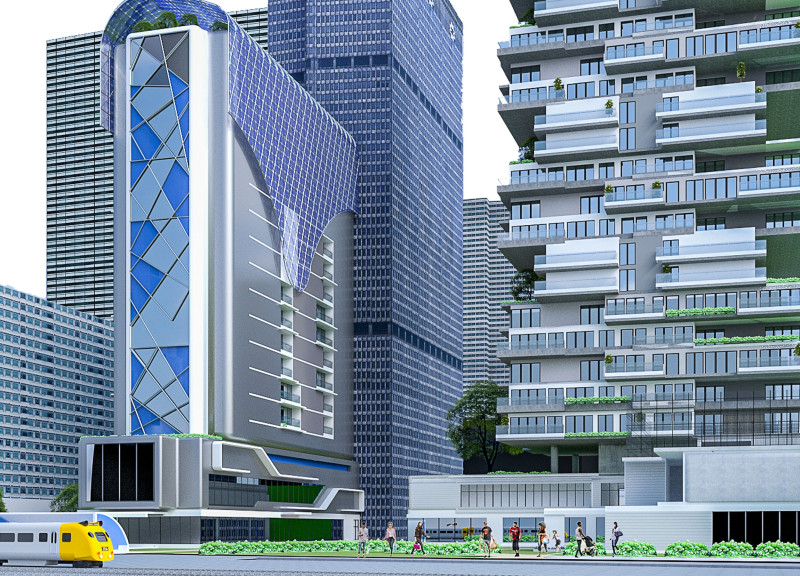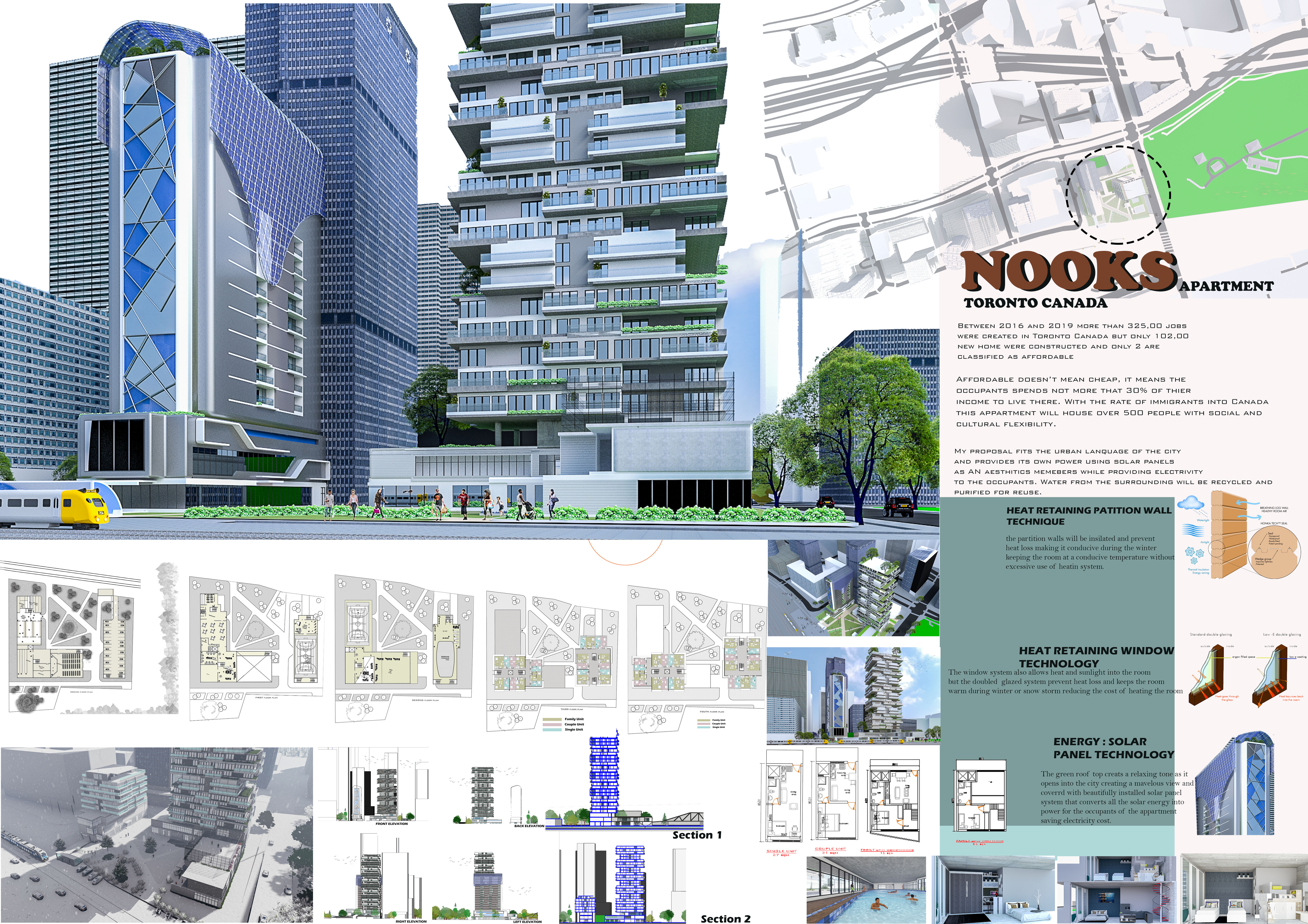5 key facts about this project
The design located in Toronto, Canada, addresses important needs in urban housing by focusing on affordable living options. The building is meant to accommodate various residents, including families, couples, and individuals. The overall concept emphasizes practicality and the importance of community, looking to create connections among people living in the space.
Sustainability Measures
Sustainability is a key feature of the design. Solar panels are strategically placed to provide electricity for the residents, aiming to lessen dependence on conventional energy sources. This focus on renewable energy aligns with ongoing environmental goals. Additionally, systems are in place to recycle and purify water, contributing to the building's reduced ecological impact.
Energy Efficiency Features
Inside the building, heat-retaining partition walls help to keep warmth from escaping during the winter months. This thoughtful choice minimizes the need for high energy consumption for heating. Coupled with double-glazed windows, the design allows natural light to fill rooms while preventing significant heat loss. Together, these elements work to create a comfortable living environment that responds to seasonal changes.
Community Oriented Design
The layout of the living units encourages interaction among residents. Large windows provide ample natural light and good ventilation, enhancing both the aesthetics and functionality of the spaces. The design recognizes that living within a community is essential. It invites residents to engage with one another and their surroundings, fostering a supportive atmosphere.
The building's exterior is designed with attention to the context of Toronto, blending with the city's architectural landscape. Each aspect of the design serves a clear purpose, enhancing usability while promoting environmentally friendly practices. This approach to residential architecture highlights the importance of creating living spaces that are not only functional but also considerate of their environmental and social surroundings.



















































